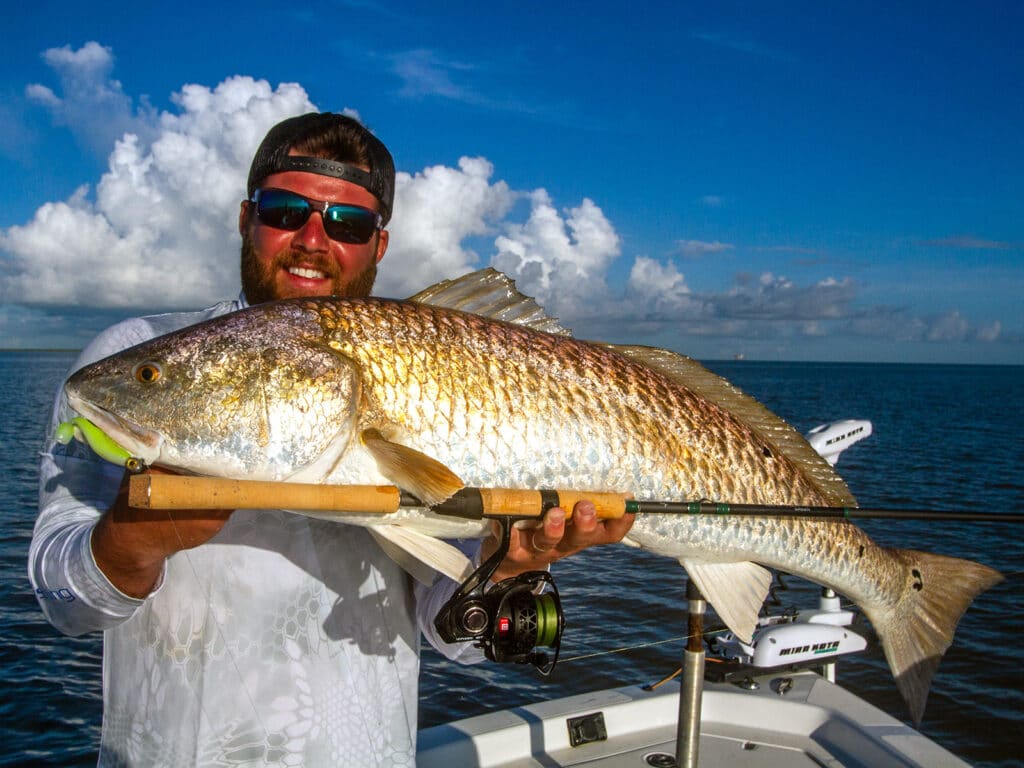
“When we’re fishing, we’re using dangerous, sharp pointy objects,” says Jamie Hough (pronounced “Huff”), a fishing captain in Charleston, South Carolina. “We’re taking a chance; even when we don’t want to keep anything, we’re going to kill some fish.”
But healthy fish stocks, particularly in Hough’s favorite fishing holes, equate to healthy charter bookings. Of the 25,000-odd redfish released from his boat, many have surely bent his clients’ rods several times prior thanks in part to his care in releasing fish so they’re likely to survive.
Try his methods to increase numbers at your favorite hot spot.
Take a Look at Your Hook
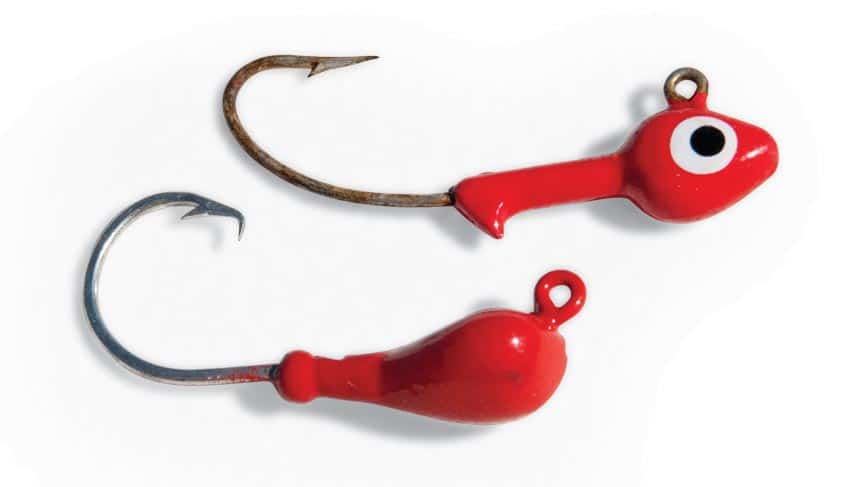
The first step in releasing healthy fish is mitigating the danger of those hooks.
“The way I fish with charters, with a live or dead bait on the bottom and the rod often in the rod holder, about half the fish would be gut-hooked with J hooks,” Hough says. Instead, he uses Gamakatsu Nautilus or similar circle hooks made by Eagle Claw and others. “I like the ones that are a hybrid between a Kahle hook and a traditional oval-shaped circle hook,” he says. “We don’t miss many fish, and we gut-hook only about one out of 20.”
He also likes circle-hook jig heads. “They’re hard to find, but they won’t get hung up in an oyster bed like a splitshot-and-hook,” he says. “Circle hooks don’t work well for throwing soft plastics, but Gamakatsu SuperLine hooks and Bomber jig heads have a wider gap, so they tend to lip-hook more fish.”
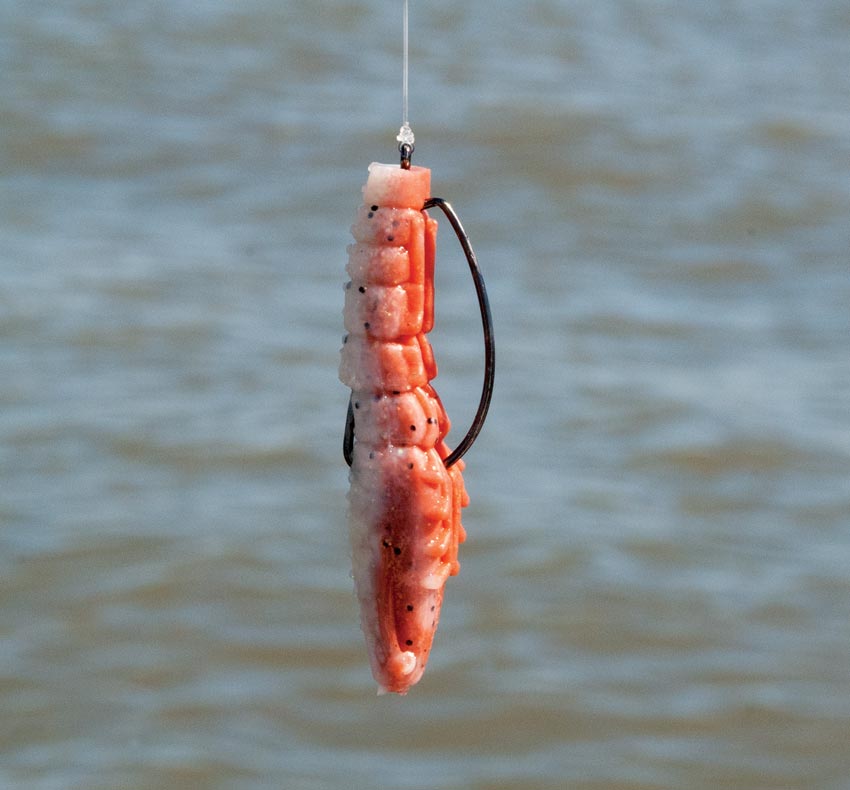
Hough also does all he can to ensure that hooked fish make it to the boat. After each fish, he checks his line and leader for frays, and re-ties the hook. A few extra rods are always rigged and ready, allowing him to tend to tackle when convenient, not during a hot bite. He also insists on fresh line, well-serviced reels and adequate-size tackle for the target species. “You don’t want to break off a fish because it was better prepared for a fight than you were,” he says.
Rubber Mesh and Wet Hands
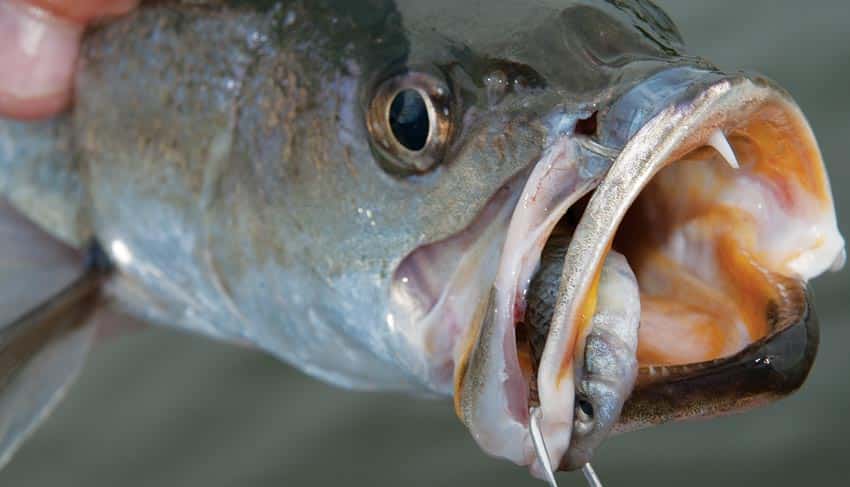
Short fights are also key to fish survival.
“As a rule of thumb with any species, when an angler in pretty good shape gets really worn down, it’s about time for that fight to end,” he says. Because he has confidence in his line, leader and gear, Hough can add a little pressure to the spool with his hand or ask a charter client to bump the drag up a bit near the end of the fight, when fish are unlikely to dash off on a blistering run.
Once they’re alongside the boat, Hough handles fish as little as possible. “I like a rubber-mesh net,” he says. “Cord nets take a lot of slime off the fish, particularly on soft fish like seatrout. That makes them susceptible to parasites and disease.” Like most pros, Hough says holding fish with a towel or coarse gloves removes even more of a fish’s slime coat.
“Wet your hands before you grab the fish,” he says. “On redfish, I slide my finger between the gill plate and the first gill raker, pointing straight up like I’m telling someone to ‘come here.’ Trout flop around a bit more, so I use a dehooker and release them over the side. That also works well for toothy critters like mackerel and bluefish.”
Life Support
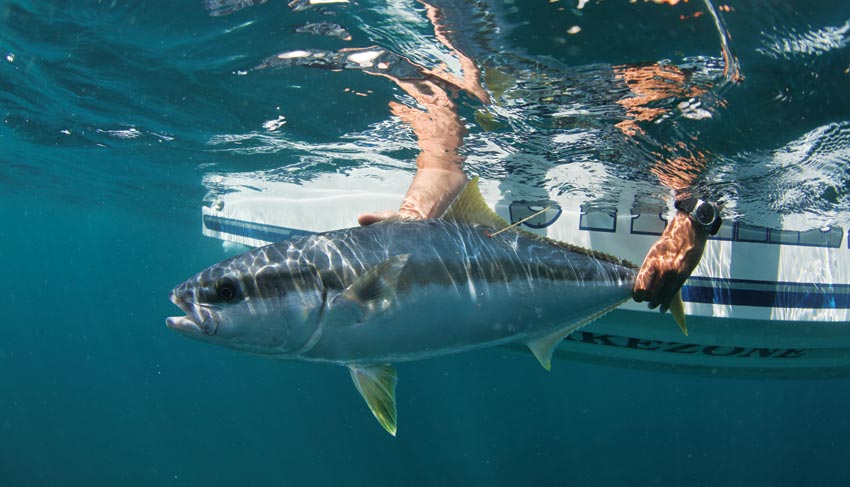
He also supports fish to keep them oriented naturally as they swim. “Fish are weightless in the water,” Hough says. “You don’t want to hang a big fish with all its weight pulling on its spine. Support the belly and hold the tail parallel to the surface of the water. If you really want to weigh a big fish, weigh it in a bucket or the net, and then subtract the weight of the bucket or net.
The same holds true offshore. “Never drag a sailfish across the covering boards. Lift it by the base of the bill and support it underneath,” he says when an angler’s first-ever sailfish might call for the shot, but he’d much rather see a photo taken from the bridge with the fish still in the water. “Grab the leader in one hand and look up at the camera. It’s a much cooler shot. For tarpon, get out of the boat and cradle the fish if you can safely, or lean over the side with the fish next to the boat.”
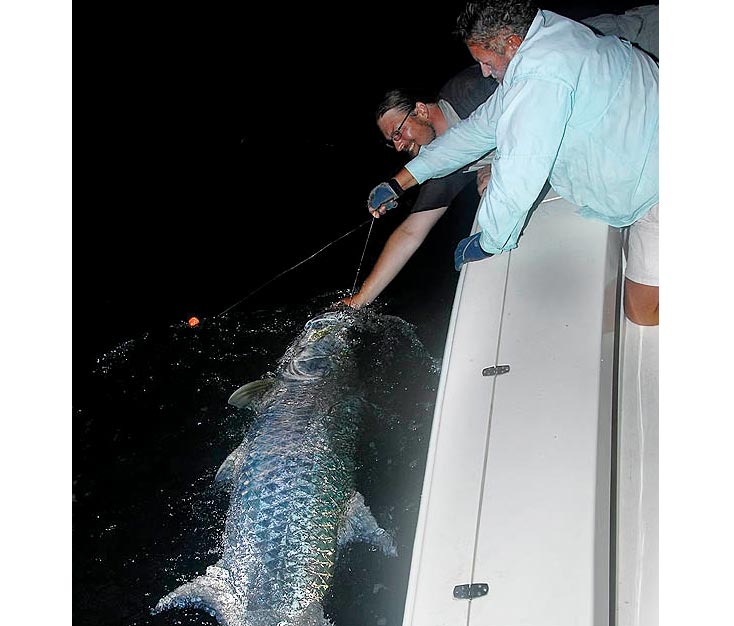
Hough also encourages guests to shoot photos of only a few fish during the day. “If it’s a bigger fish or the light is better, then take the picture,” he says. To reduce the time fish are out of the water, he also encourages using just one camera for the entire group and then sharing photos later.
Once oxygen is depleted from a fight, fish might not be able to swim well enough to revive themselves, so they need help. “You have to force water over their gills,” Hough says. “If you’re offshore, put the boat in gear and tow the fish. Hold inshore species by the tail, and move them back and forth vigorously.” Continue either action until the fish forcibly pulls away, Hough says, indicating it has adequately recovered. When predators threaten to eat released fish near the boat, Hough revives them in his livewell. “But don’t gaff or beat sharks just to kill them,” he says. “If you’re catching too many sharks, change where or how you’re fishing so you don’t catch as many.”
“Ideally, we’d get every hook out of every fish,” Hough says. “But if it’s deep in the throat or gut-hooked, cut the line as close to the eye as you can.” He’s seen redfish pass entire hooks and leaders, and says sometimes leaving the hook is better for the fish than trying to remove it.
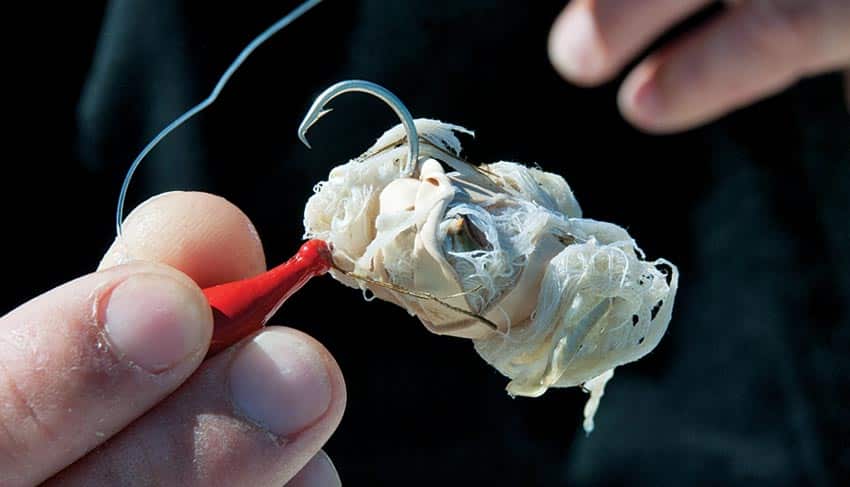
It’s often best to avoid handling larger fish offshore at all. “Zip-tie a cutoff tool to the end of your tag stick,” he says. “Use the tip of the tag stick to slide your lure up the leader, then cut the leader close to the hook.”
Hough also uses circle hooks for bottomfishing to keep undersize fish healthy for release. He vents fish that have come up from deeper than 50 or so feet. If you are using a venting tool, Hough warns, learn to use it properly for each species.
Of course some fish are released into the fish box and later the frying pan. But taking a little extra care with all those that you don’t need for food helps ensure you’ll catch more keepers next time you’re in that spot.
About the Expert
When Capt. Jamie Hough wasn’t working the cockpit of Kalex or Catch 22, or at the helm of the Otter, based at Bud N’ Mary’s in Islamorada, Florida, he was fishing the flats for tarpon, bonefish and permit. After a stint fishing offshore from the Carolinas through the Caribbean, Hough settled down in his native Charleston, South Carolina, where he runs inshore charters, works offshore as a tournament mate and sells real estate.








